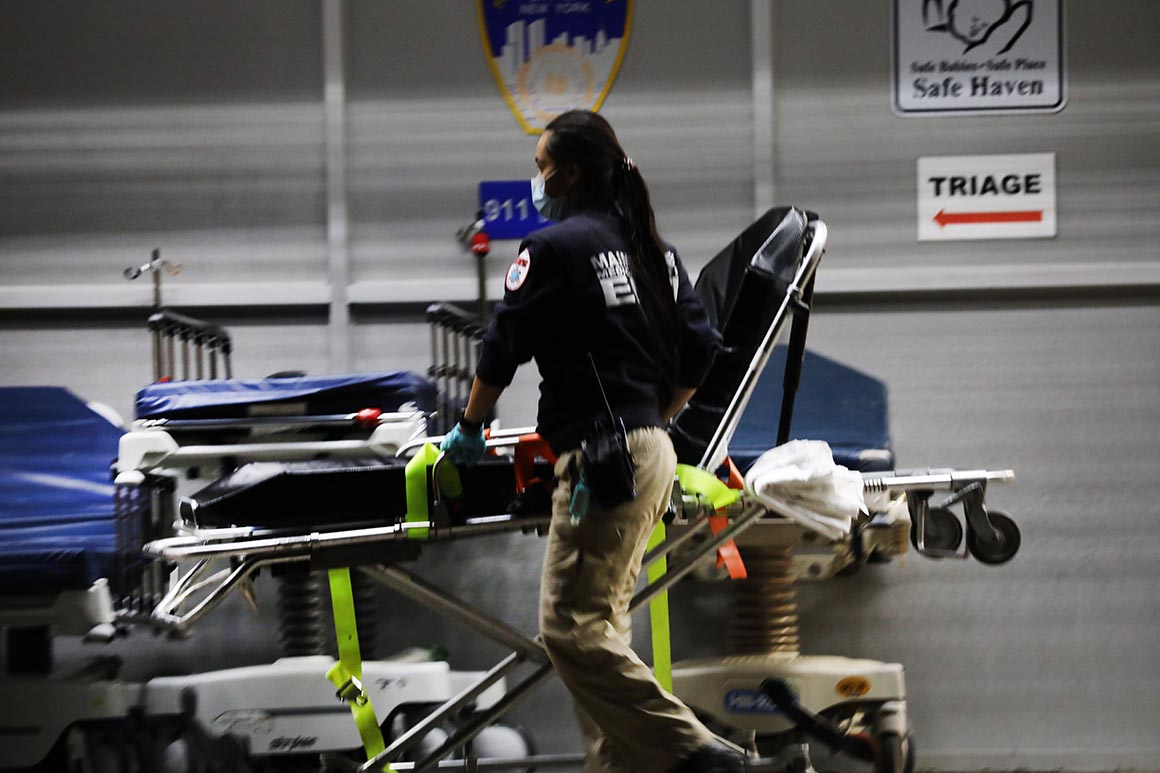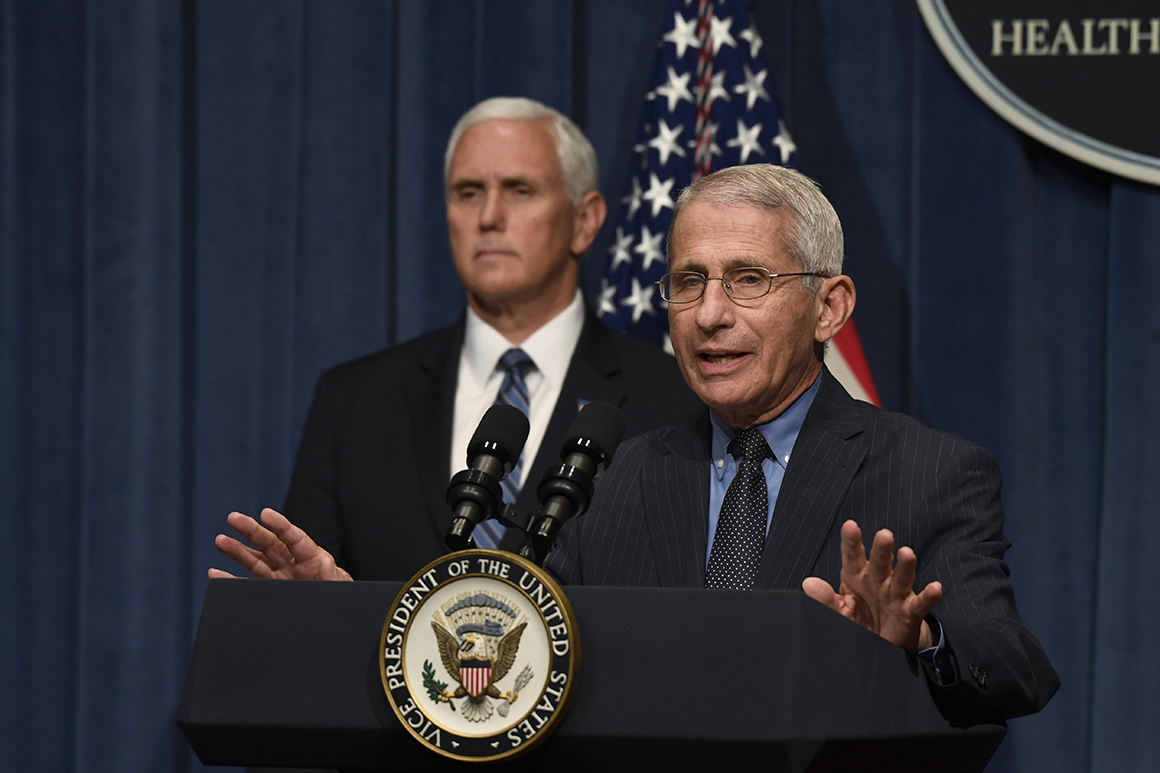
Mixed messages on the severity of the pandemic from federal and state officials helped drive a coronavirus surge in June across much of the United States.
Now, top public health officials are warning that the country could see as many as 100,000 new cases per day, testing capacity is reaching its limit and the virus is spreading out of control. After months of downplaying the coronavirus threat, the White House has changed course, urging Americans to wear masks and avoid large gatherings. But it is not clear whether the public will listen, after months of recovery talk and political battles over everything from masks to infectious disease modeling.
Public health experts say the window to act is closing, and that if the government wants to change the course of the U.S. outbreak, officials need to deliver clear, consistent messages. They should be frank about what we still don’t know about the virus, emphasize that our fates are collectively tied and focus on the need for face coverings, social distancing and frequent hand-washing.
“National leaders, including the vice president and president and governors, should not only be talking about and encouraging people to follow public health guidance — they should be modeling it themselves wherever they can,” said Tom Inglesby, director of Johns Hopkins University’s Center for Health Security. “No more of this kind of strange commentary about ‘personal choice.’ The point is to protect your neighbor, so the idea of it being a personal choice is illogical.”
An administration official rejected the idea that the messages coming from the White House have been confusing or inconsistent. "Since March, the administration has consistently recommended the use of face coverings consistent with CDC guidelines, and that messaging has been included in every set of guidance from the administration," the official said. “The messaging understands the urgency of certain states.”
Marc Lipsitch, an epidemiologist at the Harvard T.H. Chan School of Public Health, says the first step the Trump administration should take is unmuzzling its scientists.

The CDC abruptly stopped its regular briefings on the virus in March and has held only a handful since then. The White House coronavirus task force, whose members include top government scientists such as Anthony Fauci, no longer addresses the nation via daily televised briefings. And its once-daily private meetings are down to twice a week.
At the same time, more than 80 percent of Americans trust medical scientists, and more than two-thirds trust Fauci, the government’s top infectious disease expert, according to a recent New York Times/Siena College poll.
“The CDC and the other public health experts within the government need to be on the front lines talking to the country every day,” Lipsitch said. “People without scientific qualifications … do not need to be stealing the show in terms of public communication.”
But that is what has happened over the last few months, as President Donald Trump, Vice President Mike Pence and other political leaders have dominated the national conversation about how to fight the virus — often contradicting the government’s own health experts.
As cases soared in the Southeast in June, Trump repeatedly said that the new infections were simply a reflection of more testing. And as hospital capacity reached alarming levels in Texas and Arizona last week, Pence tried to tamp down concern by emphasizing that most new infections were in younger adults. He also attended a huge indoor rally at a Dallas church last Sunday and defended Trump’s decision to hold a rally in Arizona days before — where thousands of mostly maskless supporters spent hours cheering — saying it gave people the freedom to participate in the political process.
“It sends a message that those things are okay, and they are not,” Inglesby said. “These political leaders know the information and they still attended, suggesting these things are low risk. They are not low risk.”
With no clear message from the top, governors are sending their own mixed signals. Bars in Texas reopened in May while North Carolina’s stayed closed. Churches were allowed to remain open in Florida but not in Kentucky. Face coverings are mandated in New Jersey but a “personal preference” in Oklahoma.
The White House has sought to correct course over the last two weeks — with mixed results. Days after Pence said “panic is overblown," he urged younger Americans, who were ignoring “the guidance that we gave on the federal level for all the phases of reopening,” to be more vigilant because they were a growing cause of the spread.
The same administration official said there are also political considerations at play — if the vice president isn’t shaping the conversation, then the void will be filled by Trump critics or political opponents.
Trump on Wednesday told Fox Business that he’d wear a mask when he could not socially distance, in line with CDC recommendations, but only once has he been spotted wearing one. At a news conference in late May, Trump taunted a Reuters journalist for wearing a facial covering and accused the reporter of wanting to be “politically correct.” The president also mocked Joe Biden, the presumptive Democratic nominee, for wearing a mask.
There is evidence that the president’s skepticism has influenced public behavior. Three-quarters of Democrats who responded to a recent Pew poll said they wore masks most or all of the time in public, while just 53 percent of Republicans did the same. The split held even after controlling for differences in the severity of the outbreak in different parts of the country.
“The president has a unique ability to derail good policy,” Lipsitch said.
Going forward, the government needs to do a better job of managing expectations, said Jeffrey Shaman, an infectious disease researcher at the Columbia University School of Public Health. The coronavirus was unknown to science until December, and our understanding of it is changing as time passes and more people are infected.
The CDC, for example, first said masks would do little good and that the virus mostly affected the respiratory system. The guidance has evolved along with the understanding of the disease. Public health experts now know that children are more vulnerable than originally thought.
“This is where leadership and messaging are so important,” Shaman said. “People have to understand it’s not like you can spend a month wearing masks and then it’s done. We don’t have our Get Out of Jail Free card yet.”
White House messengers need to express more humility and explain how much we still don’t know, said Lori Freeman, CEO for the National Association of County and City Health Officials.
“That part of the messaging has been missing,” she said. “If you don’t say those words, each time the advice changes, as we have seen happen, it is a moment of a potential loss of trust.”
Giving the CDC a more prominent voice and promoting administration scientists as respected sources of information would also enhance public trust, Freeman said.
“If that were visible to the public, we’d be in a different place — but we don’t have that,” she said.
Instead, administration leaders have gotten out ahead of the science or just flat out contradicted it in many instances. Trump and Pence have repeatedly downplayed the role that younger Americans play in spreading the coronavirus and contributed to an over-inflated sense that they were relatively safe from its effects.
“If there was a message that was missed along the way it was that young people were not in danger of the disease or the virus,” said Arizona Gov. Doug Ducey, who is now dealing with one of the worst outbreaks in the nation. “We’re seeing young folks with comorbidities — diabetes, obesity — are at high risk, and it is how this virus is also being spread.”
And even as Trump nodded to public health Wednesday by saying he’d wear a mask, he also claimed that the virus would just disappear. There were more than 55,000 new infections reported nationwide Thursday, a new record, and the majority of states are now showing alarming spikes in cases.
Convincing the public to take basic precautions such as avoiding large groups and covering their faces is crucial because people who don’t feel sick may still have the virus and can infect others, says Keosha Bond, an assistant professor of Health Behavior and Community Health at New York Medical College.
“There will be people who are walking around not showing any signs, but that doesn’t mean they can’t spread the virus,” she said.
While Pence, HHS Secretary Alex Azar and other members of the coronavirus task force have resumed public appearances after a two-month hiatus, the president has only recently started endorsing simple preventive measures like masks following concerted calls from allies on the right and in the media to promote face coverings.
While it’s never too late to give the right message, experts fear that the country squandered the progress made in May and June, when cases were declining and the economy was coming back to life. That was the moment, Bond said, to reinforce the need to be vigilant.
“They kind of missed the ball on that,” she said. “Now, it’s a Band-Aid on a situation, which could have been prevented. That’s the problem with the mixed messaging.”
Source: politico.com
See more here: news365.stream






